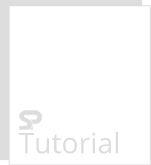 Introduction
Introduction
SIB PO Stage – 1 Online Examination, conducted in online Mode, has: a duration of 2 hours 20 minutes, a total of 160 questions, a maximum score of 200 marks, and consists of 4 sections, namely – Reasoning & Computer Aptitude, English Language, General/ Economy/ Banking Awareness, Data Analysis & Interpretation. There is a Negative marking in SIB PO Stage – 1 Online exam and [latex]{(\frac {1}{4})}^{th}[/latex] marks are deducted for each wrong answer. Candidates must clear the cut-off in all the sections to qualify for the SIB PO Group Discussion and Personal Interview.
The article SIB PO Reasoning Ability provides complete details of Reasoning Ability syllabus and provides study guide with answers. By solving this questions candidates can improve and maintain, speed, and accuracy in the exams.
 Pattern
Pattern
The SIB PO 2019 Stage - 1 Online Test consists of four different sections containing different marks with a total of 200 marks .
SIB PO Exam Syllabus- Reasoning Ability 20 Marks
| Sr. No | Name of Tests | No. of Qs. | Max. Marks | Version | Time allotted for each test (Separately timed) |
|---|---|---|---|---|---|
| 1. | Reasoning & Computer Aptitude | 40 | 50 | Only English | 40 minutes |
| 2. | General/ Economy/ Banking Awareness | 40 | 50 | 20 minutes | |
| 3. | English Language | 40 | 50 | 40 minutes | |
| 4. | Data Analysis & Interpretation | 40 | 50 | 40 minutes | |
| Total | 160 | 200 | 140 minutes | ||
- Statement – Conclusions
- Number, Ranking & Time Sequence
- Alphabet Test
- Theme Detection
- Statement – Arguments
- Series Completion
- Clocks & Calendars
- Alpha Numeric Sequence Puzzle
- Situation Reaction Test
- Arithmetical Reasoning
- Eligibility Test
- Logical Venn Diagrams
- Analogy
- Mathematical Operations
- Logical Sequence of Word
- Inserting The Missing Character
- Direction Sense Test
- Logic
- Coding-Decoding
- Data Sufficiency
Note : There will be 1/4 penalty for wrong answers
Tests will be made available only in English.
 Samples
Samples
1. Look at this series: 2, 1, (1/2), (1/4), ... What number should come next?
A. ([latex]\frac {1}{3}[/latex])
B. ([latex]\frac {1}{8}[/latex])
C. ([latex]\frac {2}{8}[/latex])
D. ([latex]\frac {1}{16}[/latex])
Answer: Option B
Explanation:
This is a simple division series; each number is one-half of the previous number.
In other terms to say, the number is divided by 2 successively to get the next result.
[latex]\frac {4}{2}[/latex] = 2
[latex]\frac {2}{2}[/latex] = 1
[latex]\frac {1}{2}[/latex] = [latex]\frac {1}{2}[/latex]
[latex]\frac{\frac {1}{2}}{2}[/latex] = [latex]\frac {1}{4}[/latex]
[latex]\frac{\frac {1}{4}}{2}[/latex] = [latex]\frac {1}{8}[/latex] and so on.
2. Look at this series: 7, 10, 8, 11, 9, 12, ... What number should come next?
A. 7
B. 10
C. 12
D. 13
Answer: Option B
Explanation:
This is a simple alternating addition and subtraction series. In the first pattern, 3 is added; in the second, 2 is subtracted.
Direction (3-4): Three of the words will be in the same classification, the remaining one will not be. Your answer will be the one word that does NOT belong in the same classification as the others.
3. Which word does NOT belong with the others?
A. parsley
B. basil
C. dill
D. mayonnaise
Answer: Option D
Explanation:
Parsley, basil, and dill are types of herbs. Mayonnaise is not an herb.
4. Which word does NOT belong with the others?
A. inch
B. ounce
C. centimeter
D. yard
Answer: Option B
Explanation:
An ounce measures weight; the other choices measure length.
5. Odometer is to mileage as compass is to
A. speed
B. hiking
C. needle
D. direction
Answer: Option D
Explanation:
An odometer is an instrument used to measure mileage. A compass is an instrument used to determine direction. Choices a, b, and c are incorrect because none is an instrument.
Direction (6-7): Find the statement that must be true according to the given information.
6. Vincent has a paper route. Each morning, he delivers 37 newspapers to customers in his neighborhood. It takes Vincent 50 minutes to deliver all the papers. If Vincent is sick or has other plans, his friend Thomas, who lives on the same street, will sometimes deliver the papers for him.
A. Vincent and Thomas live in the same neighborhood.
B. It takes Thomas more than 50 minutes to deliver the papers.
C. It is dark outside when Vincent begins his deliveries.
D. Thomas would like to have his own paper route.
Answer: Option A
Explanation:
The fact that Vincent and Thomas live on the same street indicates that they live in the same neighborhood. There is no support for any of the other choices.
7. The Pacific yew is an evergreen tree that grows in the Pacific Northwest. The Pacific yew has a fleshy, poisonous fruit. Recently, taxol, a substance found in the bark of the Pacific yew, was discovered to be a promising new anticancer drug.
A. Taxol is poisonous when taken by healthy people.
B. Taxol has cured people from various diseases.
C. People should not eat the fruit of the Pacific yew.
D. The Pacific yew was considered worthless until taxol was discovered.
Answer: Option C
Explanation:
Given the information presented, the only statement that could be considered true is that the fruit should not be eaten because it is poisonous. There is no support that taxol is poisonous or that taxol has cured anyone (choices a and b). There is no support for choice d.
Direction: Each problem consists of three statements. Based on the first two statements, the third statement may be 8. true, false, or uncertain.
Tanya is older than Eric.
Cliff is older than Tanya.
Eric is older than Cliff.
If the first two statements are true, the third statement is
A. true
B. false
C. uncertain
Answer: Option B
Explanation:
Because the first two statements are true, Eric is the youngest of the three, so the third statement must be false.
9. SCD, TEF, UGH, ____, WKL
A. CMN
B. UJI
C. VIJ
D. IJT
Answer: Option C
Explanation:
There are two alphabetical series here. The first series is with the first letters only: STUVW. The second series involves the remaining letters: CD, EF, GH, IJ, KL.
10. Statement: Should India encourage exports, when most things are insufficient for internal use itself?
Arguments:
I. Yes. We have to earn foreign exchange to pay for our imports.
II. No. Even selective encouragement would lead to shortages.
A. Only argument I is strong
B. Only argument II is strong
C. Either I or II is strong
D. Neither I nor II is strong
E. Both I and II are strong
Answer: Option A
Explanation:
Clearly, India can export only the surplus and that which can be saved after fulfilling its own needs, to pay for its imports. Encouragement to export cannot lead to shortages as it shall provide the resources for imports. So, only argument I holds.



